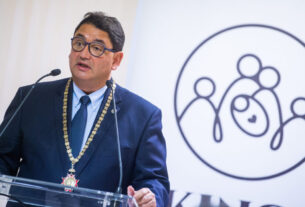In Hungary, the Christmas season doesn’t officially end on December 25 but stretches into January, culminating with the celebration of Epiphany (Vízkereszt) on January 6. This day, steeped in Christian tradition, marks the visit of the Three Wise Men to the baby Jesus and the baptism of Christ in the Jordan River. It also signals the conclusion of the festive season and the start of a new liturgical chapter.
Religious traditions
Epiphany holds significant religious importance in Hungary. Many churches host special masses and ceremonies to bless holy water, a practice that harks back to the baptism of Christ. Believers often bring bottles to church to take home blessed water, which is used to sprinkle their homes, animals, and even fields to invoke blessings and protection for the coming year.
The end of festive decorations
For many Hungarians, January 6 is the day to take down Christmas trees and pack away decorations. In line with tradition, Christmas trees, often adorned with colorful ornaments, handmade gingerbread, and edible treats, are left standing until Epiphany. Once the day arrives, the dried-out trees are taken down, and leftover edible decorations are enjoyed as a final farewell to the festive period.
Cultural celebrations
Epiphany also comes with a blend of folk traditions. In rural areas, some communities reenact the story of the Three Kings or sing Epiphany carols. Children sometimes dress up as the Magi and go from house to house, bringing good wishes for the new year.
In addition, Epiphany serves as a reminder that the Farsang (Carnival) season is just around the corner. This pre-Lenten festivity brings lively celebrations, feasts, and folk customs to brighten the long winter days.
The spiritual and social meaning
For many Hungarians, Epiphany is more than a religious occasion—it is a moment of reflection and renewal. As the Christmas season ends, people look forward to the promises of a new year, strengthened by the blessings received during this holy time.
Epiphany ties together Hungary’s rich religious heritage and folk customs, marking the transition from the Christmas season to everyday life while keeping the spirit of community and faith alive.


















